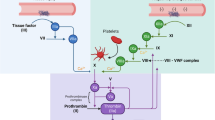Abstract
Background
Non-vitamin K oral anticoagulants (NOACs) have emerged as an attractive alternative to vitamin K antagonists for various thromboembolic indications. However, prescribed NOAC doses are often inconsistent with drug labeling and prescribers might not consider the potential risks associated with concomitant use of other drugs, which can compromise NOACs’ safety and effectiveness.
Methods
A retrospective chart review was conducted in a tertiary care center in USA over a 4-month period. We studied patients whose home medications included NOACs and assessed the appropriateness as per drug labeling, taking into consideration relevant clinical factors and concomitant drug intake.
Results
A total of 909 patients with a mean age of 70.6 ± 13.1 years, out of which 51.6% were males, were included. The majority of patients received NOACs for stroke prevention in atrial fibrillation (AF) (70.5%), or deep venous thrombosis/pulmonary embolism (DVT/PE) treatment (13.5%). The most common drug prescribed was apixaban (57.8%) followed by rivaroxaban (34.0%), and less frequently dabigatran (7.7%). Inappropriate dosing was significantly more frequent among older patients, those taking NOACs for AF, those taking a higher number of home medications, and those with a lower creatinine clearance. Seven hundred and six patients (77.67%) had at least one drug-NOAC interaction, out of which 515 were rated major interactions. Antiplatelets, amiodarone, non-steroidal anti-inflammatory medications, and calcium channel blockers were the most commonly interacting drugs.
Conclusion
A significant number of patients received NOACs at doses inconsistent with the package labeling or had clinically significant drug–drug interactions with NOACs. Efforts are warranted to improve appropriate dosing and avoid significant drug interactions.
Similar content being viewed by others
References
Steffel J, Verhamme P, Potpara TS, Albaladejo P, Antz M, Desteghe L, Haeusler KG, Oldgren J, Reinecke H, Roldan-Schilling V, Rowell N. The 2018 European Heart Rhythm Association Practical Guide on the use of non-vitamin K antagonist oral anticoagulants in patients with atrial fibrillation. Eur Heart J. 2018;39(16):1330–93.
Becattini C, Agnelli G. Treatment of venous thromboembolism with new anticoagulant agents. J Am Coll Cardiol. 2016;67(16):1941–55.
Voukalis C, Lip GY, Shantsila E. Drug-drug interactions of non-vitamin K oral anticoagulants. Expert Opin Drug Metab Toxicol. 2016;12(12):1445–61.
Trujillo-Santos J, Di Micco P, Dentali F, Douketis J, Díaz-Peromingo JA, Núñez MJ, Cañas I, Mastroiacovo D, De Sousa MS, Monreal M, RIETE Investigators. Real-life treatment of venous thromboembolism with direct oral anticoagulants: the influence of recommended dosing and regimens. Thromb Haemost. 2017;117(02):382-9.
Yao X, Shah ND, Sangaralingham LR, Gersh BJ, Noseworthy PA. Non-vitamin K antagonist oral anticoagulant dosing in patients with atrial fibrillation and renal dysfunction. J Am Coll Cardiol. 2017;69(23):2779–90.
Chang SH, Chou IJ, Yeh YH, Chiou MJ, Wen MS, Kuo CT, See LC, Kuo CF. Association between use of non-vitamin k oral anticoagulants with and without concurrent medications and risk of major bleeding in nonvalvular atrial fibrillation. JAMA. 2017;318(13):1250–9.
Lexicomp, Inc. Lexi-Drugs®. Hudson: Lexicomp, Inc.; 2018.
Steinberg BA, Holmes DN, Piccini JP, Ansell J, Chang P, Fonarow GC, Gersh B, Mahaffey KW, Kowey PR, Ezekowitz MD, Singer DE. Early adoption of dabigatran and its dosing in US patients with atrial fibrillation: results from the outcomes registry for better informed treatment of atrial fibrillation. J Am Heart Assoc. 2013;2(6):e000535.
Camm AJ, Amarenco P, Haas S, Hess S, Kirchhof P, Kuhls S, van Eickels M, Turpie AG. XANTUS: a real-world, prospective, observational study of patients treated with rivaroxaban for stroke prevention in atrial fibrillation. Eur Heart J. 2015;37(14):1145–53.
Andrade JG, Hawkins NM, Fordyce CB, Deyell MW, Er L, Djurdjev O, Macle L, Virani SA, Levin A. Variability in non-vitamin K antagonist oral anticoagulants dose adjustment in atrial fibrillation patients with renal dysfunction: the influence of renal function estimation formulae. Can J Cardiol. 2018.
Martin K, Beyer-Westendorf J, Davidson BL, Huisman MV, Sandset PM, Moll S. Use of the direct oral anticoagulants in obese patients: guidance from the SSC of the ISTH. J Thromb Haemost. 2016;14(6):1308–13.
Signorelli F, Nogueira F, Domingues V, Mariz HA, Levy RA. Thrombotic events in patients with antiphospholipid syndrome treated with rivaroxaban: a series of eight cases. Clin Rheumatol. 2016;35(3):801–5.
Proietti M, Raparelli V, Olshansky B, Lip GY. Polypharmacy and major adverse events in atrial fibrillation: observations from the AFFIRM trial. Clin Res Cardiol. 2016;105(5):412–20.
Piccini JP, Hellkamp AS, Washam JB, Becker RC, Breithardt G, Berkowitz SD, Halperin JL, Hankey GJ, Hacke W, Mahaffey KW, Nessel CC. Polypharmacy and the efficacy and safety of rivaroxaban versus warfarin in the prevention of stroke in patients with nonvalvular atrial fibrillation. Circulation. 2016;133(4):352–60.
Focks J, Brouwer MA, Wojdyla DM, Thomas L, Lopes RD, Washam JB, Lanas F, Xavier D, Husted S, Wallentin L, Alexander JH, Granger CB, Verheugt FW. Polypharmacy and effects of apixaban versus warfarin in patients with atrial fibrillation: post hoc analysis of the ARISTOTLE trial. BMJ. 2016;353:i2868.
Acknowledgements
We are deeply grateful to Huntsville Hospital’s Pharmacy department for their endless help and support. We also thank Dr. Jerry Robinson for reviewing the manuscript.
Author information
Authors and Affiliations
Corresponding author
Ethics declarations
Funding
No external funding was used in the preparation of this manuscript.
Conflict of interest
Marwan Sheikh-Taha and Mary E. Deeb declare that they have no potential conflicts of interest that might be relevant to the contents of this manuscript.
Rights and permissions
About this article
Cite this article
Sheikh-Taha, M., Deeb, M.E. Assessment of Non-vitamin K Oral Anticoagulants Use in a Tertiary Care Center in the USA: A Chart Review of 909 Patients. Am J Cardiovasc Drugs 19, 195–201 (2019). https://doi.org/10.1007/s40256-018-0310-3
Published:
Issue Date:
DOI: https://doi.org/10.1007/s40256-018-0310-3




